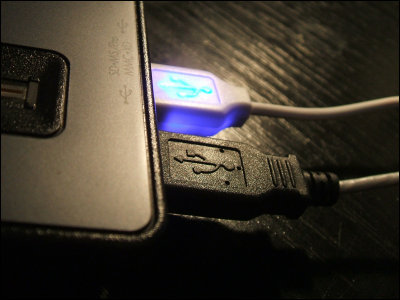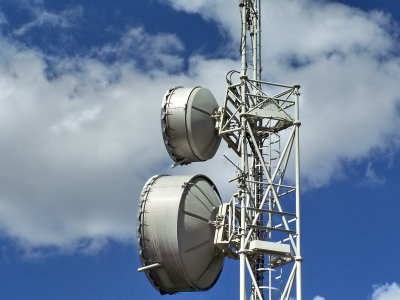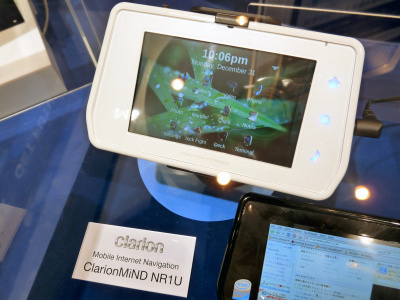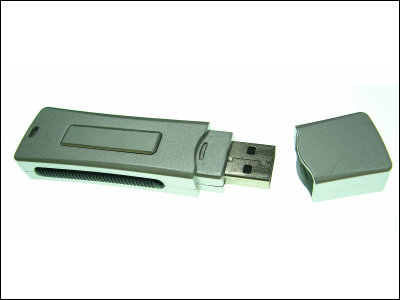KDDI's infrared communication standard 'Giga-IR' that realized ultra-high-speed transfer of 1 Gbps with a mobile phone
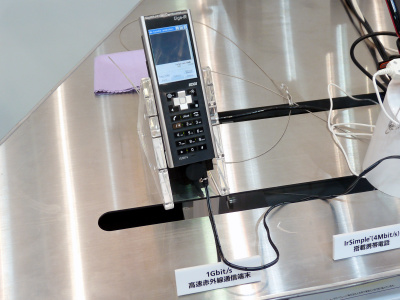
With the spread of infrared ports, it has become possible to easily exchange address books and small photos between mobile phones, but it is ridiculous that mobile phones can transfer up to 1 Gbps (125 MB per second) at ultra-high speed. Infrared communication standard ' Giga-IR ' has appeared.
Devices that are actually installed have already appeared, and the content is highly anticipated.
The 'Giga-IR' exhibited at the KDDI booth realizes high-speed communication of up to 1 Gbps. You can transfer 100MB of data in 1 second
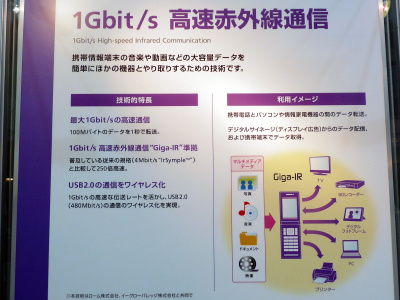
Already standardized by the Infrared Data Association
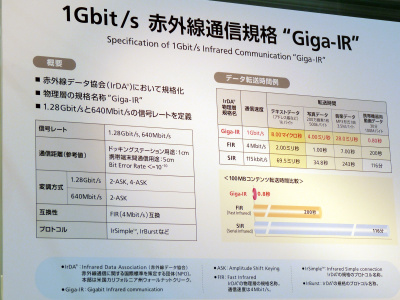
Signal rates up to 1.28 Gbps and 640 Mbps are defined. Both are faster than USB 2.0

Terminal compatible with 1 Gbps ultra-high-speed infrared communication 'Giga-IR'

This is a terminal that supports the conventional infrared communication standard 'IrSimple' that can communicate at a maximum of 4 Mbps. The communication speed is 1/250 that of 'Giga-IR'.
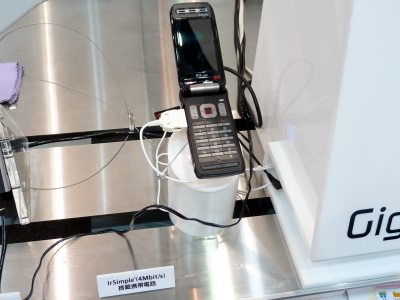
I tried arranging them
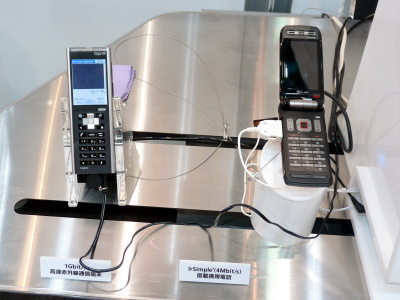
And this white box is the main body of 'Giga-IR'. It took about 3 years from 2005 to start basic development

A place where a mobile phone and a personal computer are wirelessly connected by converting USB 2.0 to 'Giga-IR'. Since the model on display is based on the current protocol such as infrared communication, it seems that full speed will not come out.
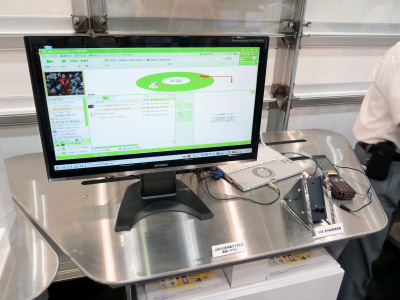
This is a device that converts Giga-IR to USB 2.0. The conversion module is mounted behind the hole in the middle. In addition, we are currently working on chipping this, and in the future it will be possible to install it on slim type mobile phones, etc., and theoretically it can be installed not only on mobile phones but also on any device.

Overview of USB infrared wireless communication system. Since it can communicate at a maximum of 1 Gbps, it can cover USB 2.0 with a maximum communication speed of 480 Mbps.
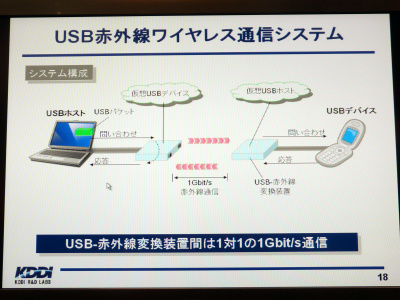
In order to realize ultra-high-speed transfer, the power consumption of 'Giga-IR' is higher than that of conventional infrared communication, but since the transfer time is overwhelmingly short, the same capacity as before is transferred. If so, it is expected that power consumption will be reduced as a result.
Related Posts:

